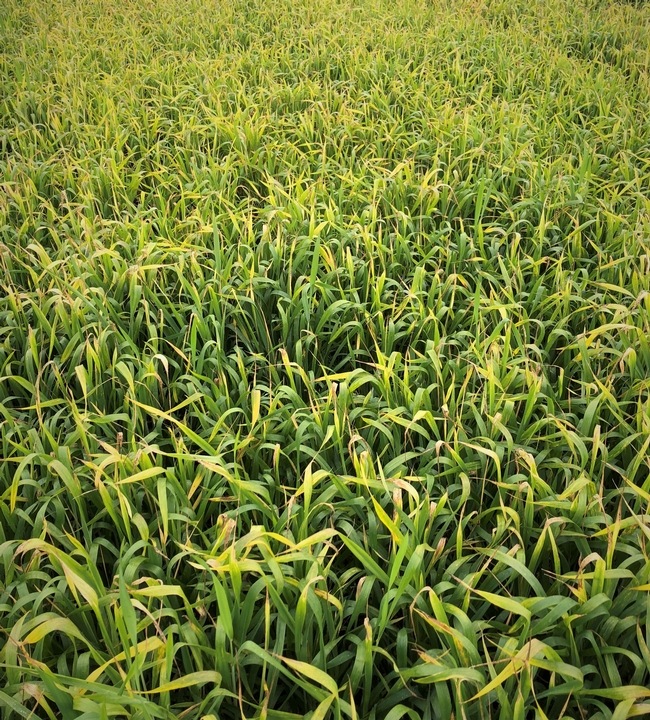It's that time of year again. Time to get small grains seeded, especially considering that there is the potential for a weather system to move through our area next week (Wednesday, November 21, 2018).
Water in our weather? Current forecasts suggest that rain could move through the area next week.
As we move into winter, it's also time to start thinking about the potential injury that can result due to environmental conditions. Last year, farm advisors in the Central Valley received a number of calls regarding injury to small grains (wheat, oats, triticale, etc…) that were later determined to be the result of cold injury. To address this issue, Dr. Michelle Linefelder-Miles, a Farm Advisor for Delta Region, authored a really good blog post describing the situations that she experienced. Her post can be accessed at: https://ucanr.edu/blogs/blogcore/postdetail.cfm?postnum=26545.
Yellowing of small grains observed in March 2018 near Turlock, CA.
Frost injury in small grains can present as tip burn, leaf chlorosis, or stem lesions; look carefully at the whorl for dead leaves or try splitting the stem to see if the growing point is water-soaked or necrotic. Remember, other types of injuries, deficiencies, diseases, and disorders can cause similar symtomology. Alternate reasons for yellowing include nitrogen deficiency, sulfur deficiency, and injury resulting from herbicide carryover from a preceding crop. To distinguish between potential scenarios, think about the following questions:
What do other small grain field in the region look like? Are the symptoms wide-spread or isolated. Are early– and late-planted field differentially affected? Was there a significant cold spell that occurred prior to the observation of injury? You can access local weather data, online, using the CIMIS network https://cimis.water.ca.gov/Stations.aspx
What parts of the plant are affected? Is the yellowing seen on older or newer tissue? For example, nitrogen deficiencies are worse on older leaves and sulfur deficiencies on younger tissue.
What is the soil texture like? Did a significant rainfall occur? Could denitrification or leaching account for the observed symptoms? Was the field fertilized properly? What were the results from your most recent soil test? Is the soil excessively wet and are the roots stunted and unhealthy looking?
Within a field, are you observing any patterns that could suggest the movement of a pest or pathogen? Are there patterns to suggest that fertilizer applications were not made uniformly? What crop preceded small grain planting and could herbicide carryover injury account for the observed symptoms? What herbicides were applied within the small grains crop? Some ALS-inhibiting herbicides registered for use in small grains can cause injury when plants are going in cool, wet soils.
So on to the important question...will this injury result in yield loss? Unfortunately, the answer is it depends. It depends on the growth stage of the plant when symptoms develop (for example, did cold injury occur when the plants were tillering (and the growing points were more protected) or when the plants were close to heading out?). It depends on whether the symptoms can be remedied (for example, is the injury the result of herbicide carryover or is it the result of a nutrient deficiency?). Please feel free to contact your local farm advisor if you see these (or other unexplained symptoms) in the coming months.
Interested in this topic? For more information about yellowing in small grains, please see the following websites:
http://blog-crop-news.extension.umn.edu/2014/05/early-seasoning-yellowing-of-wheat.html
https://cropwatch.unl.edu/soils/nutrient-deficiency-wheat
https://ucanr.edu/blogs/blogcore/postdetail.cfm?postnum=26545.

